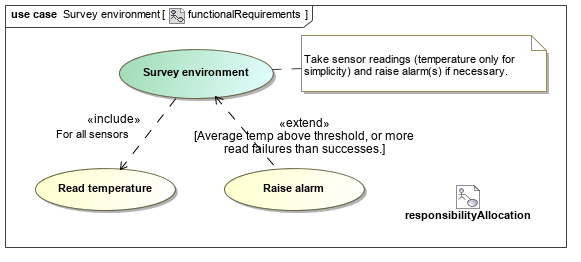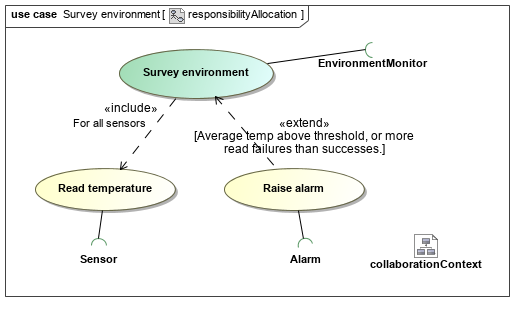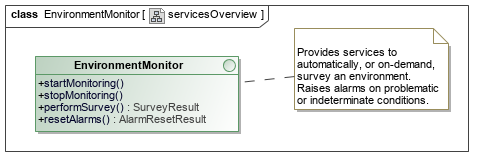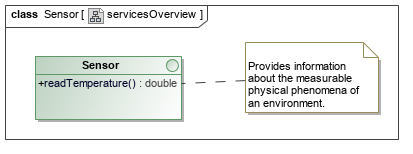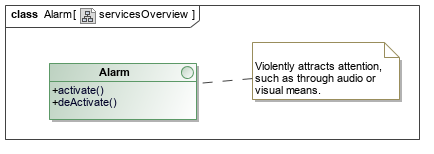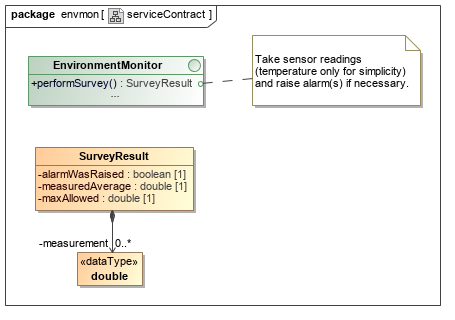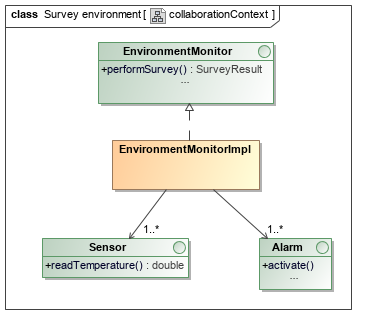Minimalist OSGi / Karaf example from first principles
This project shows how to decompose a system into basic responsibilities with contracts (interfaces), and implement those using OSGi bundles that exhibit strong run-time modularity.
In order to get the most out of this project, it's recommended
to run through the 16 steps by checking out, in sequence,
the git tags called 1, 2, ... 16.
This project was presented as a live-coding demonstration at Devcon Mauritius 2016. It is not intended as a self-contained OSGi tutorial, but should be read after studying basic OSGi concepts. Any reasonable Java developer will be able to run through the 16 steps presented and understand most of the concepts, though.
Project setup
- Recommend you open the project in a good IDE like IntelliJ IDEA (Project -> New -> From existing sources), picking "Maven" as the model when asked.
- Download and unzip Apache Karaf (or any compatible OSGi container)
- Get comfortable with running Karaf, and entering commands in the Karaf console.
Step-by-step
In order to follow along, run the git command to check out each step. Since this document is only checked-in to the Git repo at the end, be sure to make a copy, or to browse it online on Github before starting :-)
1 : Blank maven project
git checkout 1
A blank project directory, with a starting pom.xml to configure
our Java build.
2 : Defining our service contracts (API)
git checkout 2
Our use-case is one of monitoring an environment for excessive temperature, in which case we raise an alarm. Both the problem and solution space have been simplified to absurdity, in order to cover the fundamentals in-depth in a short, live session.
We've designed a set of services from first principles using a technology-neutral analysis and design process like URDAD, after which we express our concepts in UML, which we then map to Java in this step.
Our functional requirements are the following:
We assign each responsibility to a services contract:
The three services contracts that we map to Java in this step looks as follows:
In particular, our performSurvey service contract looks like:
Take a look at the Java contracts inside envmon.api for full details.
This is a plain old Java JAR, nothing special.
3 : Making our API a valid OSGi bundle
git checkout 3
And OSGi bundle is a JAR file, with metada that carefully controls what code is shared with the environment, and what is kept private.
Careful per-package versioning, adhering to semver, is very important.
Instead of setting this metadata manually in the JAR manifest, we use the Maven Bundle Plugin to do this.
To see the detailed changes made in this (or any other) step,
run: git diff 2 3, and examine the changes made to the Maven POMs.
After running mvn install, check out the contents of the JAR manifest
inside envmon.api/target/classes/META-INF/MANIFEST.MF
4 : Beginnings of an implementation, unit tests
git checkout 4
In envmon.impl, we introduce a stub for an implementation,
EnvironmentMonitorImpl. Before actually implementing any of
the methods, which you will see are currently
empty, we specify the desired behaviour in the form of executable
unit tests.
Note that our implementation simply declares references to what it needs via private, volatile fields that refer to interfaces.
Test-driven development allows us to very precisely specify
requirements in a way that simple documentation can't. Take a look
at envmon.impl/src/test/java/.../EnvironmentMonitorImplTest.java
We often express the collaboration context as follows:
When you run mvn install (or mvn test specifically) you will see that
our unit test suite fails.
5 : Basic implementation (passes test)
git checkout 5
We implement, in a very basic way, EnvironmentMonitorImpl such that our unit
test pass.
Note that we are now done implementing EnvironmentMonitorImpl, without
there even existing implementations of the required services (Alarm and Sensor).
Developing modular systems in this way means that teams can concurrently develop large systems, without bottlenecks or having to build bottom-up, yet having a high degree of confidence that things will work as expected.
6 : Making our implementation an OSGi bundle
git checkout 6
Observe the changes made to the Maven pom.xml to ensure that the
implementation, like the API, is a valid OSGi bundle. For now, we
carefully and explicitly control what we depend on (which packages
we import). There are other options, discussed later on.
We will strictly adhere to semantic versioning from this point on, to deal correctly with on-the-fly upgrade of bundles while they are running. OSGi is designed for always-on, hot-update systems, and this costs some complexity in terms of versioning and metadata.
After building (mvn install in project root), we can deploy
our bundles to Karaf if we like. Note that we separately deploy
our API and our implementation:
TODO: Write Deployment / running instructions
7 : Making an OSGi service, wiring up to dependencies
git checkout 7
In the previous step, we deployed some code to OSGi, but nothing happened. Nothing told the environment which services to expose as services to the environment, and which other services to wire them up to.
There are a large number of options in OSGi to do this, including:
- Declarative services (scr)
- Blueprint
- iPojo
- Manually
- Felix Dependency Manager
I like the fact that Felix DM allows me to express service configuration in a strongly-typed, compiled language, without polluting my actual services with annotations etc.
In this step, we introduce a bundle activator that tells Felix DM
to expose our EnvironmentMonitorImpl as a service, and to wire it
up to any Alarm or Sensor in the environment.
See: EnvironmentMonitorActivator.java
TODO: Write Deployment / running instructions
8 : Simple Alarm implementation
git checkout 8
We implement a simple Alarm service bundle, in alarm.basic
TODO: Write Deployment / running instructions
9 : Making alarm directly controllable via Karaf console
git checkout 9
Just to show that our silly alarm works, we provide it with a direct "switch"
in the form of a Karaf Console command, AlarmShellCommand.java. This allows
a user to manually activate / deactivate the alarm.
Later, or course, our EnvironmentMonitorImpl will do so in response
to extreme temperature situations.
TODO: Write Deployment / running instructions
10 : Simple sensor implementation
git checkout 10
In sensor.basic, we write a trivial sensor that randomly returns a reading
between two fixed temperatures.
TODO: Write Deployment / running instructions
You will note that we independently deploy / upgrade the three components:
- EnvironmentMonitor
- Alarm
- Sensor
and that we deployed the EnvironmentMonitor long before an alarm or sensor even existed. Yet, the moment both an alarm and a sensor is available in the environment, it immediately "springs into action" (is available as a service).
Similarly, if no alarm or sensor is present, it is itself disabled. Play with the service dynamics by enabling / disabling the different components.
On the Karaf Console, the Felix Dependency Manager also tells us about the dependencies of a service, and why, for example, a service is not available.
11 : Make EnvironmentMonitor controllable via Karaf console
git checkout 11
Since we don't have any other kind of UI (user interface), we add a simple
Karaf Shell command to interact with our EnvironmentMonitor.
See: PerformSurveyShellCommand.java
TODO: Write Deployment / running instructions
12 : Rounding out EnvironmentMonitor (rest of the services)
git checkout 12
In this step, we round out EnvironmentMonitorImpl by implementing
the rest of the services - such as starting / stopping time-based
environment polling (startMonitoring()/stopMonitoring()).
We implement these also in a test-driven manner, and finally add additional Karaf shell commands to invoke these also.
TODO: Write Deployment / running instructions
13 : Better lifecycle control, idempotency
git checkout 13
If we play around, we notice "broken" lifecycle. For example, while the alarm is sounding, we undeploy the alarm code.
Because of a faulty (naive) alarm implementation which never
itself stops, and a then-unsatisfied EnvironmentMonitorImpl, we can't
stop the alarm unless we kill karaf! (CTRL+D on the console).
In this step, we address some of these shortcomings by implementing some
service lifecycle methods, such as activate() and deActivate() on
BasicAlarm.
OSGi's potential for rich service dynamics means that naive implementations often behave badly in unexpected circumstances.
TODO: Write Deployment / running instructions. Note version number updates!
Intermission: Karaf feature to avoid repeated manual deployment
We are requiring more and more 'features' from our environment. We'd need to install about 20 bundles to obtain web services functionality, for example.
Let's declare our requirements in a 'feature' file, letting karaf sort out the transitive dependencies.
If you jump to master (git checkout master) you will see an
example of such a file in karaf-config/karaf-features.xml.
Deploying this file into Karaf acts as a "recipe" for a DIY application server; you specify the features that you want, from a near-endless shopping list. We will use this going forward.
14 : Exposing services using a RESTful API
git checkout 14
While technically possible to just sprinkle some JAX-RS
annotations on any existing contract, the semantics of
REST will pollute our Java API (which is inherently
services-oriented) with resource-oriented semantics,
as well as tie that bundle to additional dependencies.
Your clients will thank you if a design a separate, RESTful
API, as we have done here in envmon.api.rest.
In our case, both service have side-effects, so both are POST requests.
15 : Wiring our REST API up to our existing EnvironmentMonitor
git checkout 15
We introduce a separate bundle (envmon.rest.adapter) which implements
the aforementioned REST API by delegating calls to an EnvironmentMonitor.
This separation of concerns is always a good things - protocols will come and
go, and support for them shouldn't be baked into the implementation
(e.g. EnvironmentMonitorImpl).
Notice how the bundle activator of our REST adapter simply specifies via service metadata that it should be exported as a JAX-RS service.
The support configured in our environment (using Apache CXF in this case) picks this up at deployment time, and acts upon it. This is an example of the whiteboard pattern, commonly-used in the OSGi world.
TODO: Write Deployment / running instructions. TODO: Show example of invoking REST api using
curl, Postman, or whatever.
Coming next
- Example in-browser UI to invoke environment monitor via REST API
- Gathering statistics: Firing events, recording in persistent storage by stats bundle
- Dealing with multiple alarms and sensors (interesting service dynamics)
